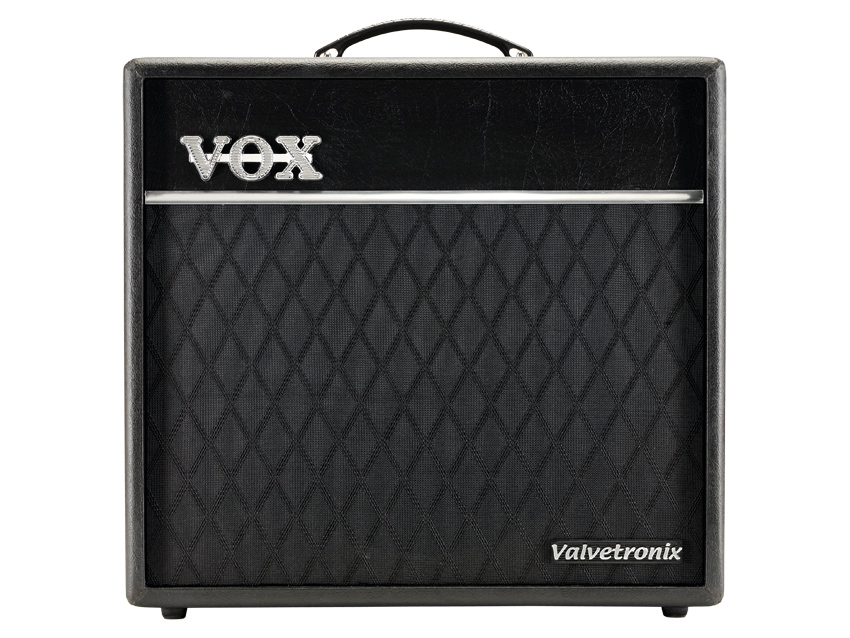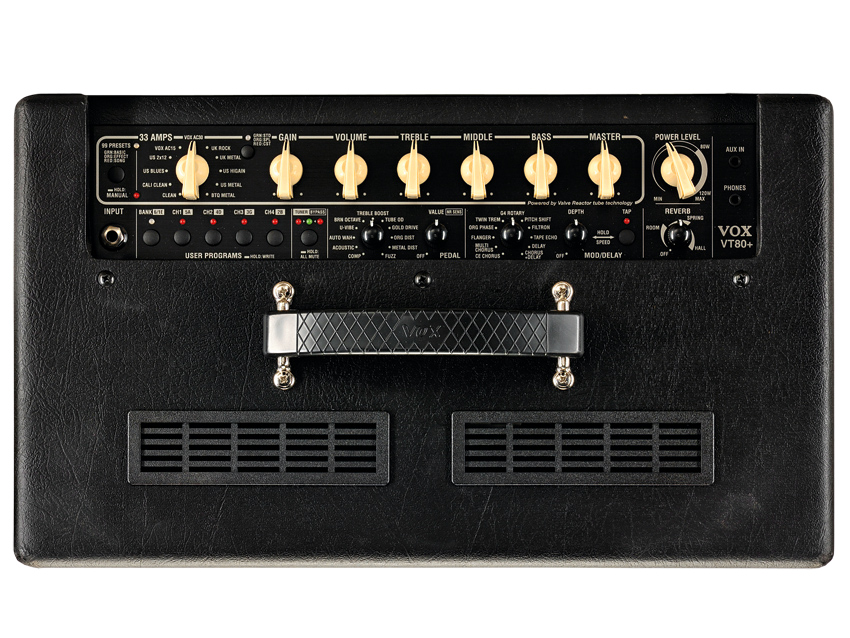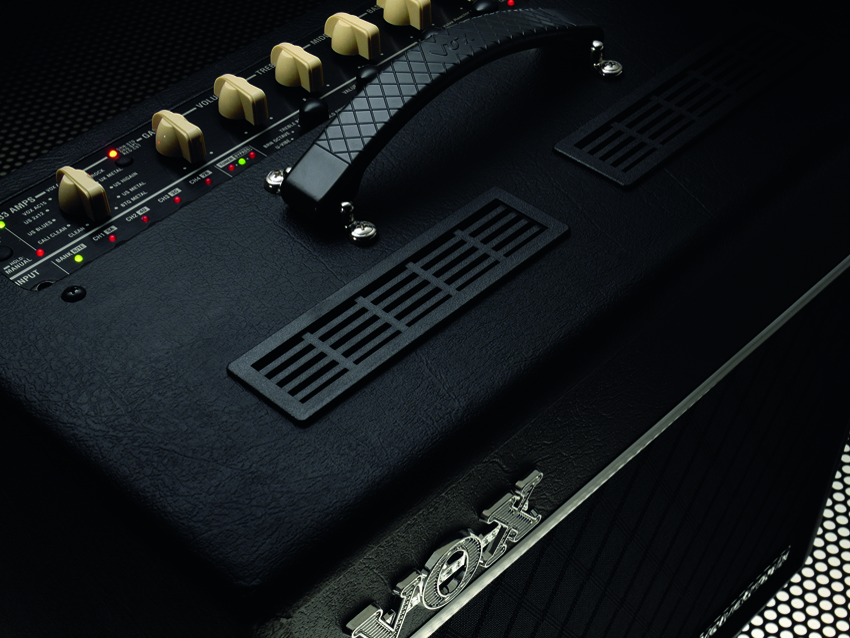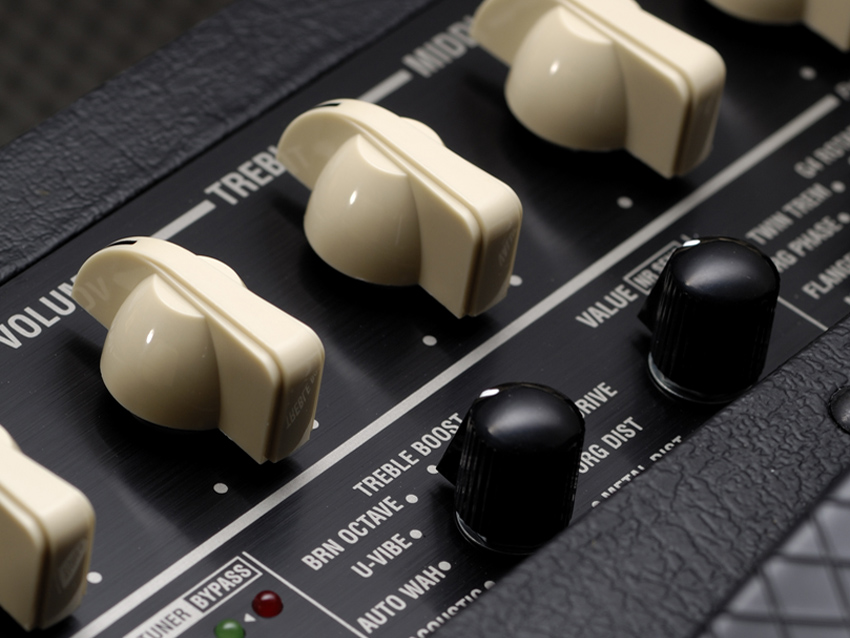MusicRadar Verdict
A genuine improvement on what's gone before, VT+ means just that: more amp models and effects, a better feel and an increased feature list.
Pros
- +
Great tones. Impressive feel. Refined amp model list. Overall versatility.
Cons
- -
It doesn't project that well.
MusicRadar's got your back

Vox Valvetronix VT80+

Vox Valvetronix VT80+

Vox Valvetronix VT80+

Vox Valvetronix VT80+
The expansive range of Vox Valvetronix amps has always deserved attention, not only because of their impressive collection of quality sounds and features, but also because they have the distinct advantage of echoing one of the most classic noisebox liveries in rock 'n' roll history.
Now see the Vox Valvetronix VT80+ in action
Updated and uprated, there's now even more to enjoy in the new VT+ range. For starters, the outputs of the four amps in this upgraded range have, in relation to their price points and associated markets, been increased, so this VT80+ takes over from the VT50 as the highest-rated 1 x 12 combo: the choice is capped by the 2 x 12 VT120+.
"It provides a widely differing array of satisfying tones suitable for myriad styles."
In short there's more of everything. All VT+ units feature 11 extra amp models, 13 more effects - including three types of reverb - and an increase to a whopping 99 presets compared to the original VT's 66.
Vox states that there are 33 amp models in total - a number equating to the three versions of the 11 basic choices, which are then split, either between a trio of sub-sections in channel select mode (standard, special and custom, selected via a small button) or, in preset mode, basic, effect and song - the latter alluding to a range of sound-alike tones based on classic tracks from rock, metal and blues history.
The selection of amps on offer is certainly less confusing on the VT+ and, good though the Express Train and UK 25th models on the old VT are, the options here make much more sense.
You know exactly what you're getting with US High Gain and Vox AC30, for example. We ask Vox product development manager Dave Clarke to give us an overview of how the modelling process actually works.
"We designed our own unique system in which our DSP experts capture the essence and soul of an amplifier, take a digital snapshot of it and then store it away," he says.
"It's a painstaking process, that takes weeks of listening, A/B-ing and tweaking until the models are perfect."
You can save up to eight completed tones within two channels of four presets and the process of choosing, editing and ultimately saving tones is very straightforward once you've got your head around the amp's basic infrastructure.
A major USP of the VT and VT+ ranges is the provision of a 12AX7 valve. We've explained it many times over the years, so let's have an official recap. Clarke: "It's a popular misconception that the valve is used in the preamp; it's actually used in the power section," he explains.
"Our Valve Reactor design takes the 12AX7, configures it as a small low-powered push/pull tube stage and uses a transparent solid-state power stage to amplify things to a usable level."
A power level control on the front panel allows you to alter the amp's output without interfering with the volume balances of your own presets, and there's also now a noise reduction system and an onboard tuner.
We decided to dive right in and go through a choice of the song presets. Their authenticity does depend on what guitar you happen to be using - for example, a Strat is far more convincing with the Foxy Lady and Smoke On The Water tones - but the sounds on the whole are as good as we remember.
The higher gain models are always great fun to play with, and the VT+ provides more than its fair share of dynamic sag and spongy pick attack.
UK Metal is the most for modern styles as it provides a balanced mix between sheer low end and high gain treble, and it's probably no surprise that Enter Sandman is among the song choices for this model.
The Org Phaser is great with the more subdued amps and, with a high speed setting and a Les Paul's neck pickup, it gives the US 2 x 12 model the perfect sound to recreate the keyboard intro to Zep's No Quarter.
It may not be quite pokey enough to cut through a loud band at battle volume, but it provides a widely differing array of satisfying tones suitable for myriad styles.
It's worth mentioning that it also sounds good through headphones: good for practise. As long as Vox continues to make improvements and refinements in keeping with those featured on the VT80+, its modelling future looks as bright as ever.
This is a complicated amp, certainly, but never unwelcomingly and it doesn't take too long to find your way around the front panel and come up with some exciting and authentic sounds.
It can sometimes be difficult to see the wood for the trees in the vast modelling amplifier forest. The new Vox VT+ range is right up there with the best from Line 6 and Fender, so be sure to give them a try.
Our Hendrix fantasies are realised by playing a Strat though the UK Rock model with some Univibe, and switching to a Les Paul gives tones ranging from Angus Young to Gary Moore depending on how much gain you use.
The Gold Drive effect can add sufficient saturation if used sparingly, and the Treble Boost effect works wonders with the AC30 model for Brian May's ultra-thick tone.
Simon Bradley is a guitar and especially rock guitar expert who worked for Guitarist magazine and has in the past contributed to world-leading music and guitar titles like MusicRadar (obviously), Guitarist, Guitar World and Louder. What he doesn't know about Brian May's playing and, especially, the Red Special, isn't worth knowing.
Brace yourself: Bryan Adams didn’t buy his first real six-string in a five and dime
“Nobody listens to one genre. I literally don’t know anybody who listens to one genre. You can be a fan of so many different artists at once”: Laufey on what Gen Z can teach the rest of us about how to appreciate music
Bon Iver - ranked: from Sable, Fable to For Emma, Forever Ago









